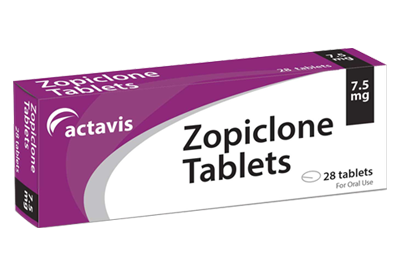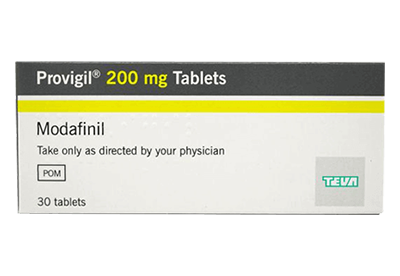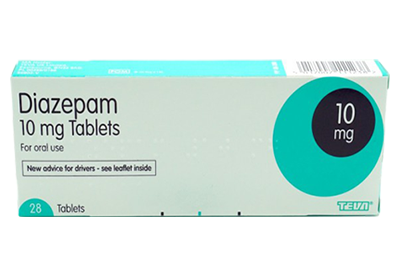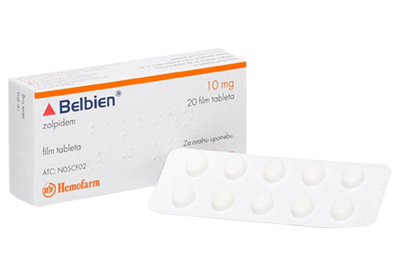
Zopiclone
Zopiclone comes from the class of drugs known as non-benzodiazepines, and is typically used to treat short-term sleep disturbances, especially for those who have difficulty falling asleep, and staying asleep. This medication is most often used when non-drug approaches like improved sleep habits, and relaxation are not sufficient.
£5.97 £3.77
Go to PharmacyIt is most commonly used for a limited period, often only a few nights or weeks. Even though zopiclone can improve sleep quality and reduce awakenings, it does not treat underlying disorders that may contribute to insomnia. It is cautioned to use the minimum effective dose to avoid risks of daytime drowsiness, dependence, or adverse effects.
Most patients report that using zopiclone, helps restore normal routine, supports better mood, concentration, and energy levels during the day. This is achieved because the medication promotes more natural sleep patterns, which is beneficial in breaking a cycle of insomnia that can feed stress or anxiety.
What is Zopiclone?
This medication is a non-benzodiazepine hypnotic agent that belongs to the Cyclopyrrolone class of drug. It was first introduced in the mid-1980s and was originally developed by Rhone-Poulenc (now part of Sanofi). More familiar by the brand name Imovane and Zimovane it is available in Zopiclone 7.5mg and zopiclone 10mg dosage strengths.
This type of medication is also called “z-drug”, which relates to the group of sleeping pills that begin with the letter Z. They are typically used short-term, when benzodiazepines would be inappropriate. Regulatory bodies have approved this medication for adult use, but will often recommend a reduced dosage for elderly people or those with kidney or liver impairment. Zopiclone 10mg is a strong sleeping pill that is recommended when other treatments prove ineffective. It should only be taken after consultation with a medical professional.
How Zopiclone Works
This drug functions by enhancing the effects of the neurotransmitter gamma-aminobutyric acid (GABA) in the brain. Its chemical structure is distinct, and it will bind to the GABA receptor complex at sites that overlap with those for benzodiazepines.
Zopiclone will affect the central nervous system by producing sedative, anxiolytic, muscle-relaxant and some anticonvulsant properties. It exhibits a relatively short to moderate half-life, which can be anywhere between 3.5 to 6.5 hours in a healthy adult. Its sleep producing qualities have a tendency to start very quickly but wear off, reducing residual sedation for many users.
However, when higher doses are used like zopiclone 10mg, or in the elderly or hepatic impaired people, the half-life may increase, leading to risk of next day impairment. The mechanism for this medication allows the brain to settle into deeper stages of sleep more naturally, leading to better rest and improved next-day functioning.
Z Drugs
Z Drugs refer to a class of medications known as hypnotics, which include zopiclone. All having been developed to offer alternatives to benzodiazepines for insomnia, with claims of fewer side effects, less risk of dependence, and shorter half-lives. Regularly preferred by patients and doctors alike due to their tendency to have a faster onset of action and less potential for a “hangover” effect. They are typically used by individuals needing short-term treatment of sleep initiation difficulties or frequent awakenings.
Among these, zopiclone is one of the most widely used. It is common for patients to prefer z-drugs because they characteristically support better sleep architecture, fewer awakenings, and less residual sedation, when compared to other sleep aids. There is a chance that these advantages diminish with higher doses like zopiclone 10mg or longer use, due to tolerance being achieved.
Clinical Uses
The following is a list of the most common situations and conditions where this medication may be used:
- Comorbid Insomnia with Anxiety or Pain – While zopiclone is not a pain killer, nor an antidepressant, it does have sedative and anxiolytic effects that can help when insomnia is worsened by mental or physical pain.
- Situational Insomnia – Occasional use of this medication has been shown to help with stress, jet lag, or acute disruption of sleep schedule induced insomnia.
- Primary Insomnia – Also known generally as just “insomnia”, the failure to fall asleep and stay asleep without obvious cause. Zopiclone 7.5mg is typically used in adults to reduce sleep latency and improve overall sleep quality.
- Sleep Maintenance Problems – Zopiclone can often be used by individuals who find themselves waking up multiple times during sleep.
In addition to these most common instances or use, this medication may be considered in patients experiencing short-term sleep disturbances caused by shift work or irregular schedules that disrupt the circadian rhythm.
Sleeping Pills Comparison Chart
The following chart highlights the main difference between common sleep aids and zopiclone, allowing users to make informed decision with professional guidance.
| Drug | Onset of Action | Duration | Common Uses | Notes |
|---|---|---|---|---|
| Zopiclone | Around 60 min | 7-8 hrs | Insomnia | Preferred for restorative sleep and frequent awakenings |
| Zolpidem | Around 30 min | 6-8 hours | Short-term sleep issues | Preferred for Sleep onset |
| Valerian | Variable (>1hour) | 4 – 6 hours | Herbal, for mild insomnia | Less evidence for efficacy and potency |
As shown zopiclone has a balanced profile, making it one of the most widely used medications for the treatment of insomnia. Having a moderately quick onset of action and half-life, it provides a full night’s sleep without next day grogginess.
Zolpidem is frequently chosen when a rapid onset is desired, especially for those who have difficulty falling asleep but have no issue staying asleep. Valerian, being an herbal option, is generally used for mild cases of insomnia, has the fewest potential side effects, but also has questionable efficacy.
Zopiclone is usually preferred when predictable results and known efficacy are required. Patients and healthcare professionals can compare these options to select the safest, most effective approach for short-term sleep support.
Dosage and Administration
The typical dose of this medication is taken orally just before going to bed, allowing for 7-8 hours of uninterrupted sleep. This medication should be swallowed whole, not crushed, or chewed, and can be taken with or without food. For the average adult in good health a regular dose is zopiclone 7.5mg. The lower starting doses and half strengths are often reserved for use with the elderly, or individuals with hepatic of renal impairment.
Care must be taken due to the increase of side effects when using the largest dose of zopiclone 10mg. The highest dose is not often recommended, due to the increased likelihood of next day sedation, memory impairment, or falls.
Treatment duration is usually limited to 2-4 weeks, to reduce the risk of tolerance. If this medication does not seem to producing the desired effect, it is strongly encouraged to review underlying causes, sleep hygiene and stress management options with a licensed healthcare provider.
Safety and Potential Side Effects
The most common side effects associated with zopiclone include dry mouth, daytime drowsiness, headache, dizziness, fatigue, and a bitter or metallic taste in the mouth. Many of these common effects can subside in time with being well hydrated, and as the body adapts. More serious but less common side effects include hallucinations, confusion, mood changes, allergic reactions, and memory issues.
Users taking a dosage smaller than zopiclone 7.5mg, have less opportunity for next-day drowsiness. Regardless of the lowered risk, extra caution should be taken on tasks that require alertness, like operating heavy equipment or driving. Combining alcohol, other sedatives and recreational drugs, magnifies the risks and should be avoided.
In extremely rare cases, there is the possibility of vivid dreams, changes in appetite, and mild gastrointestinal issues. Patients should ask persons close to them to monitor for unusual behaviour like sleep walking, sleep eating, or making phone calls while asleep, when taking zopiclone.
Risks, Dependence and Precautions
The risk of dependence increases with dose, and duration of use. Even though zopiclone is intended for short-term insomnia, regular nightly use beyond a few weeks increases potential for enhanced tolerance, pathological dependence, and withdraw symptoms if stopped abruptly.
In order to reduce this risk, it is often recommended to start with a dose lower than zopiclone 7.5mg. Precautions for the use of this medication include avoiding use if patient has severe liver disease, undergoing respiratory treatments, or has sleep apnoea.
Elderly people are more sensitive to this medication and should be closely monitored when beginning treatment with zopiclone. Gradually tapering off the medication is recommended, if wanting to discontinue treatment after long periods to avoid rebound insomnia. It is highly recommended to perform regular follow-ups with a healthcare provider, to ensure that zopiclone is still appropriate and allows safe discontinuation when no longer needed.
Price of Zopiclone
The cost of this medication can vary depending upon fluctuating manufacturing costs and strength. Generic versions will often offer the best value, while branded tablets may cost more. As with most medications, bulk orders will lower the price considerably, however, since most people use this medication for a short period, they only need a limited supply.
| Pack Size (Tablets) | Strength | Price Range (GBP) |
|---|---|---|
| 30 | 7.5 mg | £38 - £43 |
| 60 | 7.5 mg | £58 - £63 |
| 90 | 7.5 mg | £83 - £88 |
| 28 | 10 mg | £42 - £47 |
| 56 | 10 mg | £64 - £69 |
| 84 | 10 mg | £89 - £94 |
Zopiclone pricing can also depend on the pharmacy and whether it is obtained through private insurance or is covered under a national health service, it is best to check with your provider if applicable. Patients are encouraged to discuss cost-saving potentials with their healthcare provider, such as switching to generics or adjusting the dosage frequency, to keep treatment affordable while maintaining effectiveness, and minimaxing potential side effects.
Frequently Asked Questions
How long does it take for zopiclone to work?
This medication will typically start to work within 30 to 60 minutes after ingestion. For best results, it should be taken just before bed with enough allocated time to allow for 7-8 hours of undisturbed sleep.
What happens if you take zopiclone and stay awake?
If you stay awake after taking this medication, you may feel drowsy, dizzy, or uncoordinated. Some people report memory gaps or doing other things they cannot remember when taking zopiclone and remaining awake.
Can you take zopiclone during the day for anxiety?
In rare cases, yes, a lower dose of zopiclone can be used to treat anxiety, but it is generally not recommended, since it also impacts alertness.
How long does zopiclone stay in your system?
In the average adult with good health, this medications half-life is around 3.5 to 6.5 hours. The bulk of the effect will have dissipated by morning.
Is dependence possible?
Yes, especially if using the highest dose or for long periods of time. Gradual tapering off zopiclone is recommended when wanting to discontinue treatment after prolonged usage.
Are withdrawal symptoms possible and how can I manage them?
Withdrawal symptoms are possible with zopiclone, and include rebound insomnia, irritability, or anxiety. Gradual dose reduction and implementation of good sleep hygiene are the best methods for management of withdrawal.


